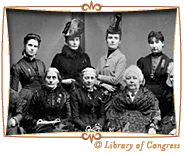The
Suffragist movement was one of the most important movements in the woman’s History.
To get their rights they used mainly two ways: newspapers and publicity.
It was a
way of calling the attention of all the citizens. They used the influence that
the newspapers were exercising on the people to be made know and to attract to
more supporters. In addition, they used also postcards as part of the campaign
for the women’s rights to vote. The postcards got the messages of the movement
across in short, clear, and often humours ways.
Many of
this publicity was clear in some newspapers managed by women suffragist, as the
Woman’s Journal, an American weekly suffragist periodical by Lucy Stone and her
husband devoted to the interests of woman (her educational, industrial, legal
and political equality)
But it was
not enough to have supporters. In fact, it was a way to get enemies. There were
a lot of them that thought that women were a danger for the society and they
were acting against the nature. For this raison, those opposed to women’s
suffrage also used postcards to get their message out to the public, showing
the figures of the women in a humourist way.
We can find
a lot of this postcards in the Palczewski Postcard
Archive at the University of
Northern Iow who has a number of great examples that illustrate the frames used
to present women’s full political participation as threatening.
Postcards issued by other groups reflect these same themes. The clear
message is that giving women the right to vote threatens men, the family, and
the entire natural order of things
From an actual point of view ,we have found these postcards so interesting. They show an other different world totally unimaginable for the mentality of that epoch but a way of life totally adapted in ours. In that world we find families without fathers, only with the figure of the women as authority; fathers participating in childcare and in the housework; women being the sustenance to the family; women being leaders in politic or taking jobs reserved only for men.
Some postcards show women expressing opinions and wearing
trousers (the "Pantalette Suffragette") in
ways that are threatening men's face and social order. If these images were presented
without context, a modern viewer might assume that they must be "pro" women's
suffrage images, because they represent things that are compatible with mainstream
values today.
This collection of postcards essentially shows us the
world that we live in. We can say they predicted that Women's Suffrage would lead the new style-life, even if men were against it.








